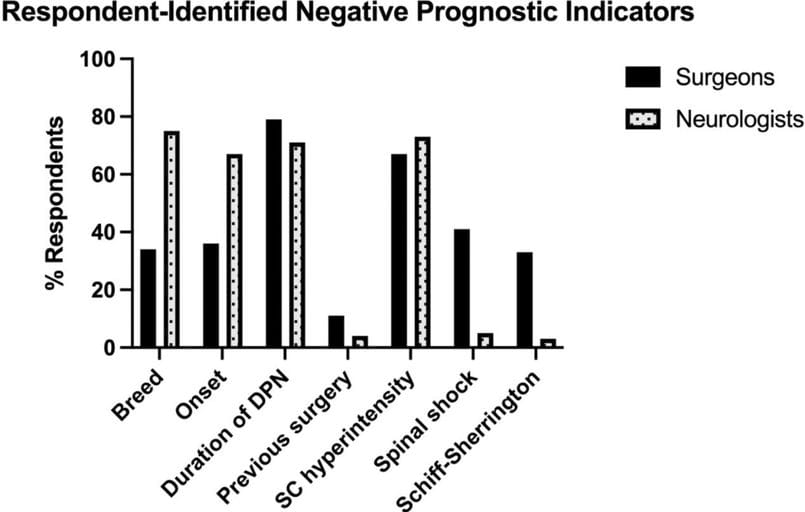- Veterinary View Box
- Posts
- 🐕💉 New Survey Reveals Global Shifts in Canine Disc Surgery Practices
🐕💉 New Survey Reveals Global Shifts in Canine Disc Surgery Practices
JSAP 2025
S. Moore, P. Early, N. Olby, B. Hettlich
Background
Acute thoracolumbar intervertebral disc extrusion (IVDE) is a common neurologic condition in dogs requiring surgical intervention. Since the last survey in 2016, new ACVIM consensus guidelines, imaging advances, and novel surgical techniques have emerged. This study aimed to document current practice patterns among veterinary neurology and surgery specialists in North America and Europe, comparing results to 2016, and identifying areas where practices diverge from current evidence.
Methods
A web-based survey was distributed between October and December 2024 to board-certified neurologists and surgeons (ACVIM, ECVN, ACVS, ECVS) as well as regional specialists. Questions addressed caseloads, imaging, surgical approaches, peri- and post-operative care, prognostic factors, and rehabilitation. Responses were summarized with descriptive statistics and compared between neurologists and surgeons using chi-squared tests.
Results
A total of 385 responses were collected (382 analyzed). Neurologists typically managed >100 IVDE cases annually, while most surgeons managed 1–25. MRI was the dominant imaging choice for neurologists (92%), whereas surgeons used CT more frequently (44%). Hemilaminectomy remained the preferred surgical technique across groups. Neurologists were significantly more likely to perform concurrent fenestration (80% vs. 47%). Both groups sometimes performed durotomy, but indications and extent varied widely. Corticosteroid (methylprednisolone sodium succinate) use had declined compared to 2016 (10% of surgeons, 5% of neurologists). There was increasing consensus that paraplegic dogs with absent nociception should undergo surgery “as soon as possible within working hours” rather than emergency overnight. Prognostic indicators varied: surgeons emphasized spinal shock and Schiff–Sherrington posture, while neurologists emphasized breed (notably French Bulldogs) and rapid onset of signs. Post-operative rehabilitation was recommended by 73% of respondents, with neurologists more likely to recommend acupuncture and surgeons more likely to recommend structured rehabilitation. Pain management strategies also differed, with surgeons favoring NSAIDs and opioid boluses, while neurologists used opioid CRIs and benzodiazepines more often.
Limitations
The study relied on self-reported survey data, which are subject to recall and response bias. Response rates were uneven across specialties, with lower participation from surgeons and European specialists, limiting generalizability. Regional specialists were difficult to reach systematically. Comparisons did not adjust for multiple testing, reflecting the exploratory design.
Conclusions
Practice patterns for managing acute canine IVDE have shifted since 2016, reflecting evolving literature and consensus guidelines. MRI is increasingly prioritized, fenestration is more widely performed, and high-dose corticosteroid use has declined. Differences between neurologists and surgeons remain, particularly in imaging preferences, fenestration practices, and perceptions of prognostic factors. Future prospective studies comparing MRI vs. CT outcomes and clarifying prognostic indicators for recovery and progressive myelomalacia are needed to further harmonize practices and improve care delivery.

Factors considered negative prognostic indicators for recovery by “surgeons” and “neurologists” surveyed about their management approaches to acute canine thoracolumbar disc extrusion. “Surgeon” includes respondents indicating ACVS or ECVS board certification and “neurologist” includes respondents indicating ACVIM (neurology) or ECVN board certification.
How did we do? |
Disclaimer: The summary generated in this email was created by an AI large language model. Therefore errors may occur. Reading the article is the best way to understand the scholarly work. The figure presented here remains the property of the publisher or author and subject to the applicable copyright agreement. It is reproduced here as an educational work. If you have any questions or concerns about the work presented here, reply to this email.